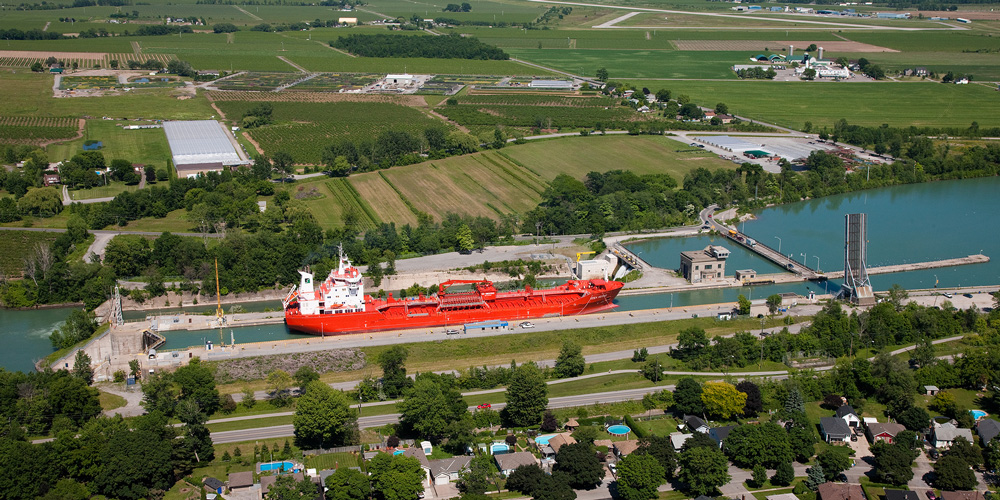Great Lakes Seaway Trade Mission Seeks German Short Sea Shipping Expertise
October 19, 2005
St. Catharines, October 19, 2005 — Saint Lawrence Seaway Development Corporation Administrator Albert S. Jacquez and St. Lawrence Seaway Management Corporation President Richard Corfe are leading a delegation of 22 American and Canadian public and private sector maritime officials from throughout the Great Lakes region on a week-long trade mission to England and Germany. The delegation is touring Germany’s Lower Saxony ports and terminals in Hamburg, Bremen, and Brake to learn about the region’s short sea shipping and container cargo operations.
Long-established as a practical cargo transport mode in Europe, short sea shipping has recently emerged in North America as a viable means of integrating rail and truck transportation in the movement of cargo. Interest in the short sea shipping has been especially keen in the binational Canadian-U.S. Seaway System that acts as a gateway to the continent’s agricultural and manufacturing heartland.
“With global trade forecast to triple within the next 20 years, the Seaway system has the capacity to double cargo within its existing infrastructure,” Jacquez said. “Europe has led the way in pioneering short sea shipping, but to be effective in our market, we must be able to show that we are cost effective, reliable, and have available capacity.”
Bottlenecks and backlogs at major coastal ports, highway congestion, limited railcar availability, and border crossing delays are increasingly challenging shippers worldwide to find alternative ways in which to move their cargo. Maritime transportation moves more cargo per ton mile/per gallon of fuel than rail or truck, is environmentally friendly, and has a strong record of safety. The Great Lakes St. Lawrence Seaway System offers a viable alternative to shippers seeking new transportation routes.
Two examples of recent short sea initiatives in the Great Lakes St. Lawrence Seaway System involve the transport of aluminum and wood products. Aluminerie Alouette’s newly renovated and enlarged factory in Sept-Iles, Quebec, the largest in the Americas, is shipping ingots by barge weekly up the St. Lawrence River to Trois-Rivieres and through the Seaway to Toledo. The forestry giant Kruger is also using Hwy H2O instead of a congested Route 138: it has begun shipping wood chips by barge from Forestville, Quebec to Trois-Rivieres.
“We are doing everything we can to encourage the growth of short sea shipping in the Great Lakes,” said Richard Corfe, President and CEO of Canada’s St. Lawrence Seaway Management Corporation. “In addition to the use of ships for short-haul cargoes, we are focusing on the use of unique, smaller vessels tailored to this purpose.”
At the Seaway opening this year, the Seaway Management Corporation announced reduced lockage fees for the next three years for all ships with ‘new cargo’, either containerized cargo or smaller volume shipments. “We are just beginning to see the movement to short-sea shipping take hold, and there will be a concerted effort to vigorously promote it in our system,” said Corfe.
The Seaway trade mission group is meeting with senior representatives of European shipping companies, government officials, international maritime organizations, bulk cargo exporters, and the cruise ship industry. The face-to-face contact with maritime industry leaders and decision-makers is designed to increase use of the Great Lakes St. Lawrence Seaway System. Port directors, marketing chiefs, shipping agents, cruise industry representatives, and maritime trade specialists are representing several U.S. and Canadian Great Lakes ports.






